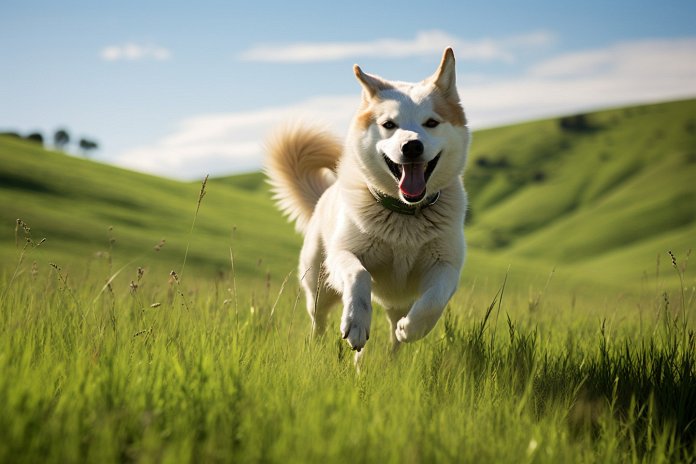
People worldwide are dog owners and dog lovers. Dogs can be found in various habitats such as deserts, forests, cities, small towns, and farms. However, just because dogs live in these areas does not mean it is always healthy for them. This raises the question of whether it is safe and healthy for dogs to live in grasslands.
Living in Grasslands:
Grasslands, mainly found in the Great Plains area of mid-Western America, are usually dry with little water and consist of dry bushes and grass. Potential owners or those considering moving to these areas wonder if grasslands can support a happy and healthy dog. The good news is that dogs are resilient animals, and with attentive owners, they can live in most environments, including grasslands.
Signs of Difficulty in Grasslands:
Owners living in grassland areas need to be cautious of dehydration and overheating in their dogs due to the dry and hot climate. The signs of both conditions are similar, including low energy levels, tiredness, excessive panting, decreased appetite, and dry eyes, nose, and gums for dehydration. Overheated dogs may also exhibit weakness, glazed eyes, rapid heartbeat, vomiting, and bright tongue or gums. These symptoms can also occur if the dog is sick, so it is essential to be familiar with the signs and seek veterinary care if necessary.
Body Language Indicating Struggle:
If a dog is struggling in a grassland climate, it may display body language such as whining, shaking, cowering, panting, weakness, lack of focus, dropped ears, tongue hanging out, or whale eye.
Other Signs of Struggling:
Additional signs that a dog is not doing well in a grassland habitat include shaking or trembling, seizures, lethargy, lack of appetite or weight loss, sticky and bright gums, non-elastic skin, excessive thirst, lack of focus, collapsing, and dry nose.
History and Science:
Dogs have been evolving alongside humans for thousands of years, adapting to various environments and ecosystems worldwide. Some breeds are better suited for dryer climates due to their physical and genetic makeup. Dogs with shorter coats and high energy levels tend to thrive in grasslands, while breeds with pushed noses may struggle in hot weather.
Training for Grassland Living:
While it is not possible to train a dog specifically for grassland living, there are ways to acclimate them to the drier and hotter weather. Regular exercise is essential, but owners should avoid overexertion. Providing ample water and monitoring the weather are crucial for preventing dehydration and overheating. On extremely hot days, it is best to limit outdoor time and ensure the dog has a cool indoor environment.
“Keep an eye on your pup’s body language and other signs to ensure they thrive in grassland habitats.”

Tips & Things to Know
1️⃣ Look out for signs of dehydration and overheating in your dog if you live in a grassland area. These signs include low energy levels, excessive panting, decreased appetite, dry eyes and nose, and quick and heavy breathing.
2️⃣ Learn to recognize body language cues that indicate your dog is struggling with the climate. These cues include whining, shaking, cowering, weakness, lack of focus, dropped ears, and tongue hanging.
3️⃣ Choose a dog breed that is well-suited for grassland environments. Dogs with shorter coats and plenty of energy tend to do better in hot and dry climates. Provide your dog with proper exercise, access to water, and monitor the weather conditions to ensure their well-being.
Frequently Asked Questions, Answered ✅
1. Can dogs live in grasslands?
– Yes, dogs can live in grasslands as they are resilient animals and can adapt to various habitats and environments.
2. What are the signs of dehydration in dogs in grasslands?
– Signs of dehydration in dogs include lower energy levels, tiredness, excessive panting, reduced appetite, dry eyes, nose, and gums.
3. What are the signs of overheating in dogs in grasslands?
– Signs of overheating in dogs include rapid panting, sticking tongue out, high body temperature, weakness or collapse, glazed eyes, fast heartbeat, vomiting, and drooling.
4. How can you determine if your dog is dehydrated or overheated?
– The pinching test can be done by gently pulling the skin on your dog’s back. If it takes longer to return to normal, it may indicate dehydration or overheating. Additionally, check their gums for dryness and press on them to see if they remain white for a longer time.
5. What can be done to help dogs adapt to living in grasslands?
– Providing plenty of water, monitoring their exercise to avoid overexertion, and being aware of the weather conditions are important in helping dogs adapt to living in grasslands.